Gui-Song Xia
Accurate Polygonal Mapping of Buildings in Satellite Imagery
Aug 01, 2022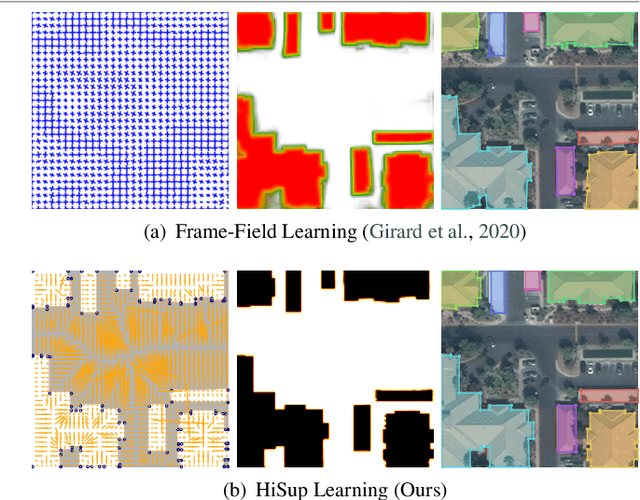



Abstract:This paper studies the problem of polygonal mapping of buildings by tackling the issue of mask reversibility that leads to a notable performance gap between the predicted masks and polygons from the learning-based methods. We addressed such an issue by exploiting the hierarchical supervision (of bottom-level vertices, mid-level line segments and the high-level regional masks) and proposed a novel interaction mechanism of feature embedding sourced from different levels of supervision signals to obtain reversible building masks for polygonal mapping of buildings. As a result, we show that the learned reversible building masks take all the merits of the advances of deep convolutional neural networks for high-performing polygonal mapping of buildings. In the experiments, we evaluated our method on the two public benchmarks of AICrowd and Inria. On the AICrowd dataset, our proposed method obtains unanimous improvements on the metrics of AP, APboundary and PoLiS. For the Inria dataset, our proposed method also obtains very competitive results on the metrics of IoU and Accuracy. The models and source code are available at https://github.com/SarahwXU.
Detecting tiny objects in aerial images: A normalized Wasserstein distance and a new benchmark
Jun 28, 2022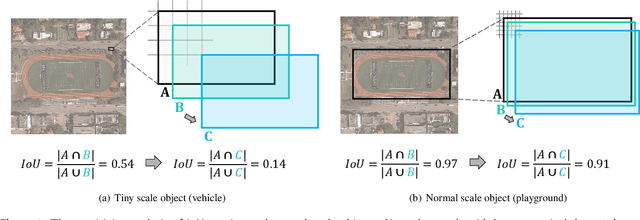
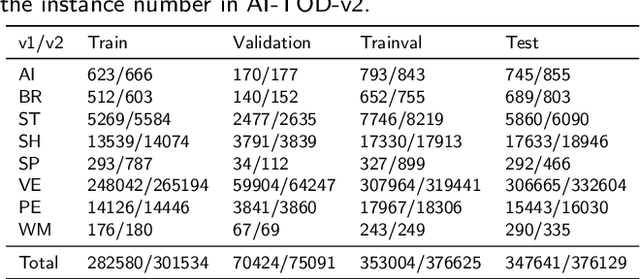
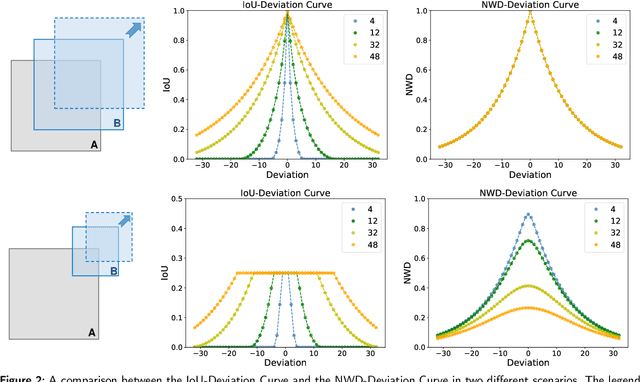
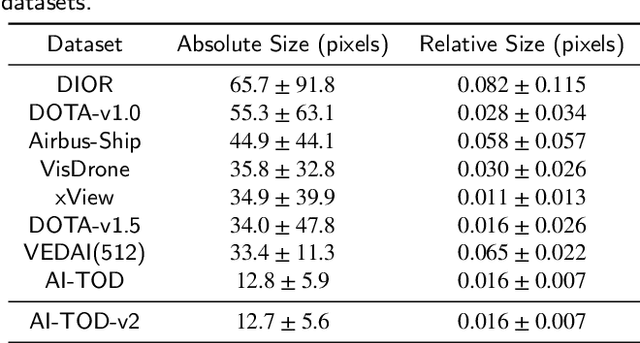
Abstract:Tiny object detection (TOD) in aerial images is challenging since a tiny object only contains a few pixels. State-of-the-art object detectors do not provide satisfactory results on tiny objects due to the lack of supervision from discriminative features. Our key observation is that the Intersection over Union (IoU) metric and its extensions are very sensitive to the location deviation of the tiny objects, which drastically deteriorates the quality of label assignment when used in anchor-based detectors. To tackle this problem, we propose a new evaluation metric dubbed Normalized Wasserstein Distance (NWD) and a new RanKing-based Assigning (RKA) strategy for tiny object detection. The proposed NWD-RKA strategy can be easily embedded into all kinds of anchor-based detectors to replace the standard IoU threshold-based one, significantly improving label assignment and providing sufficient supervision information for network training. Tested on four datasets, NWD-RKA can consistently improve tiny object detection performance by a large margin. Besides, observing prominent noisy labels in the Tiny Object Detection in Aerial Images (AI-TOD) dataset, we are motivated to meticulously relabel it and release AI-TOD-v2 and its corresponding benchmark. In AI-TOD-v2, the missing annotation and location error problems are considerably mitigated, facilitating more reliable training and validation processes. Embedding NWD-RKA into DetectoRS, the detection performance achieves 4.3 AP points improvement over state-of-the-art competitors on AI-TOD-v2. Datasets, codes, and more visualizations are available at: https://chasel-tsui.github.io/AI-TOD-v2/
* Accepted by ISPRS Journal of Photogrammetry and Remote Sensing
Exploring the Potential of SAR Data for Cloud Removal in Optical Satellite Imagery
Jun 06, 2022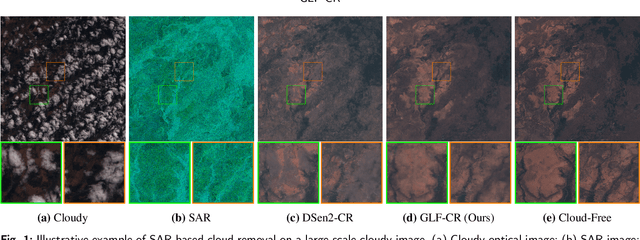

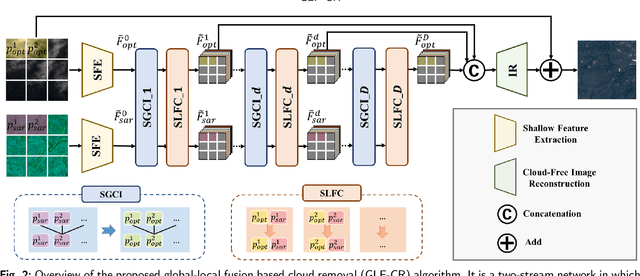
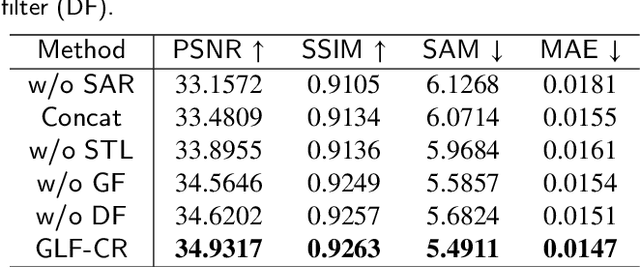
Abstract:The challenge of the cloud removal task can be alleviated with the aid of Synthetic Aperture Radar (SAR) images that can penetrate cloud cover. However, the large domain gap between optical and SAR images as well as the severe speckle noise of SAR images may cause significant interference in SAR-based cloud removal, resulting in performance degeneration. In this paper, we propose a novel global-local fusion based cloud removal (GLF-CR) algorithm to leverage the complementary information embedded in SAR images. Exploiting the power of SAR information to promote cloud removal entails two aspects. The first, global fusion, guides the relationship among all local optical windows to maintain the structure of the recovered region consistent with the remaining cloud-free regions. The second, local fusion, transfers complementary information embedded in the SAR image that corresponds to cloudy areas to generate reliable texture details of the missing regions, and uses dynamic filtering to alleviate the performance degradation caused by speckle noise. Extensive evaluation demonstrates that the proposed algorithm can yield high quality cloud-free images and performs favorably against state-of-the-art cloud removal algorithms.
All Grains, One Scheme : Learning Multi-grain Instance Representation for Aerial Scene Classification
May 06, 2022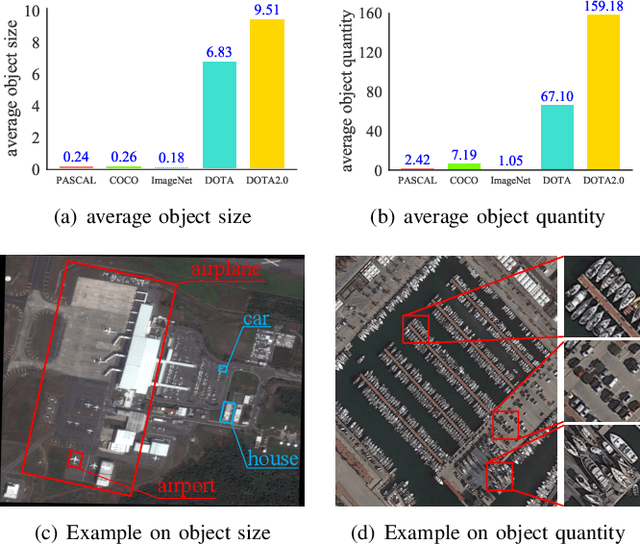
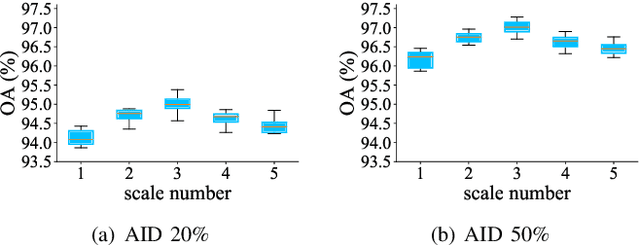
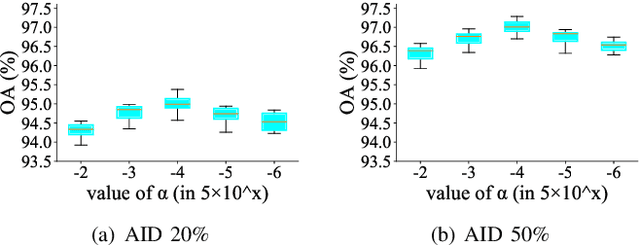
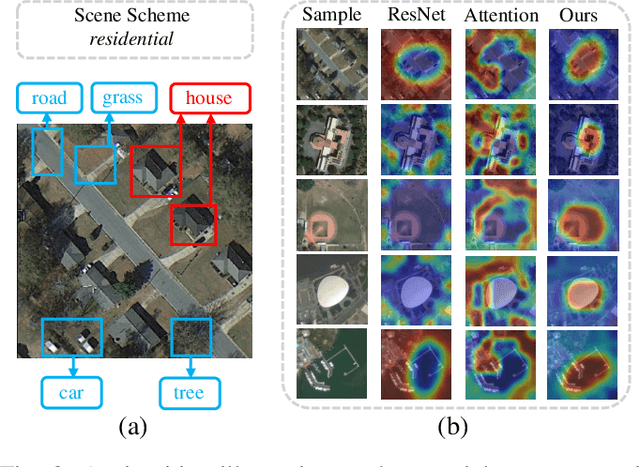
Abstract:Aerial scene classification remains challenging as: 1) the size of key objects in determining the scene scheme varies greatly; 2) many objects irrelevant to the scene scheme are often flooded in the image. Hence, how to effectively perceive the region of interests (RoIs) from a variety of sizes and build more discriminative representation from such complicated object distribution is vital to understand an aerial scene. In this paper, we propose a novel all grains, one scheme (AGOS) framework to tackle these challenges. To the best of our knowledge, it is the first work to extend the classic multiple instance learning into multi-grain formulation. Specially, it consists of a multi-grain perception module (MGP), a multi-branch multi-instance representation module (MBMIR) and a self-aligned semantic fusion (SSF) module. Firstly, our MGP preserves the differential dilated convolutional features from the backbone, which magnifies the discriminative information from multi-grains. Then, our MBMIR highlights the key instances in the multi-grain representation under the MIL formulation. Finally, our SSF allows our framework to learn the same scene scheme from multi-grain instance representations and fuses them, so that the entire framework is optimized as a whole. Notably, our AGOS is flexible and can be easily adapted to existing CNNs in a plug-and-play manner. Extensive experiments on UCM, AID and NWPU benchmarks demonstrate that our AGOS achieves a comparable performance against the state-of-the-art methods.
Learning to Extract Building Footprints from Off-Nadir Aerial Images
Apr 28, 2022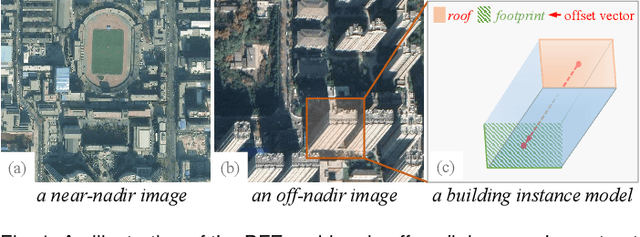
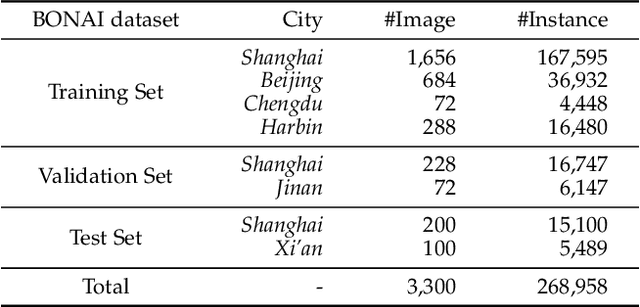
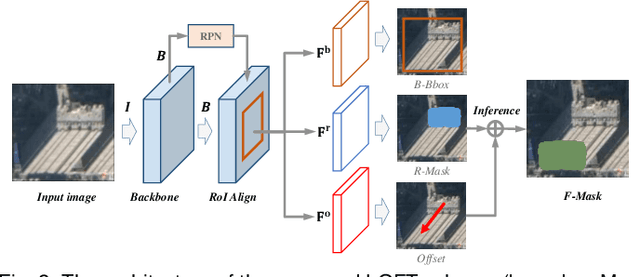
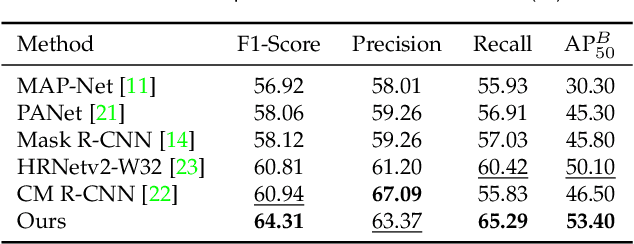
Abstract:Extracting building footprints from aerial images is essential for precise urban mapping with photogrammetric computer vision technologies. Existing approaches mainly assume that the roof and footprint of a building are well overlapped, which may not hold in off-nadir aerial images as there is often a big offset between them. In this paper, we propose an offset vector learning scheme, which turns the building footprint extraction problem in off-nadir images into an instance-level joint prediction problem of the building roof and its corresponding "roof to footprint" offset vector. Thus the footprint can be estimated by translating the predicted roof mask according to the predicted offset vector. We further propose a simple but effective feature-level offset augmentation module, which can significantly refine the offset vector prediction by introducing little extra cost. Moreover, a new dataset, Buildings in Off-Nadir Aerial Images (BONAI), is created and released in this paper. It contains 268,958 building instances across 3,300 aerial images with fully annotated instance-level roof, footprint, and corresponding offset vector for each building. Experiments on the BONAI dataset demonstrate that our method achieves the state-of-the-art, outperforming other competitors by 3.37 to 7.39 points in F1-score. The codes, datasets, and trained models are available at https://github.com/jwwangchn/BONAI.git.
An Empirical Study of Remote Sensing Pretraining
Apr 06, 2022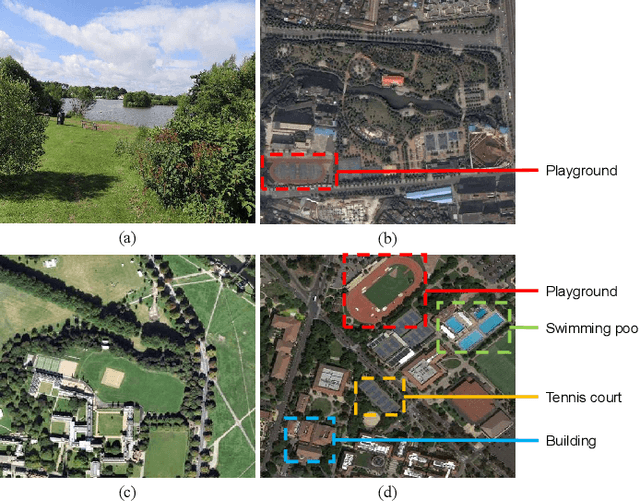
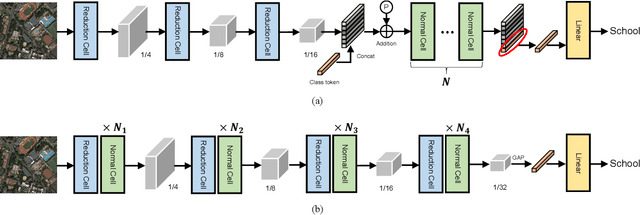
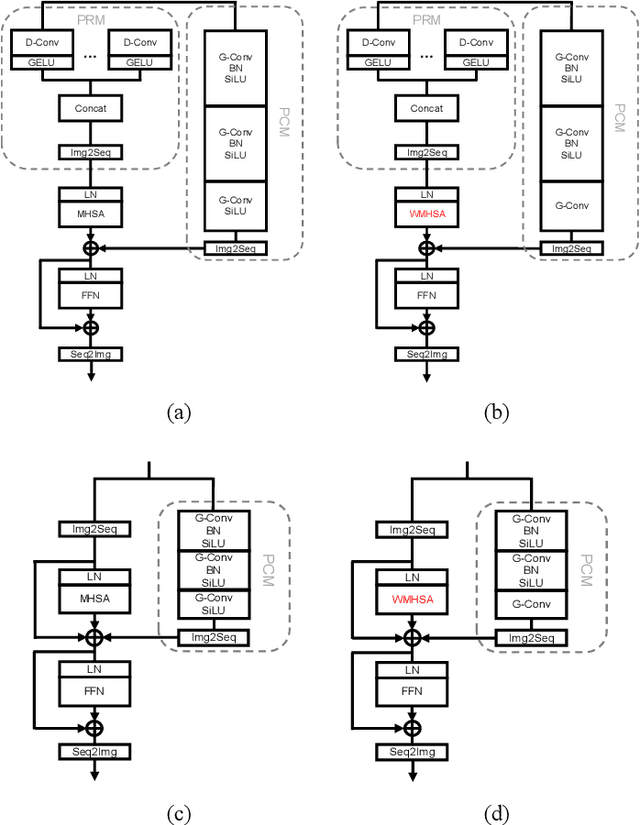
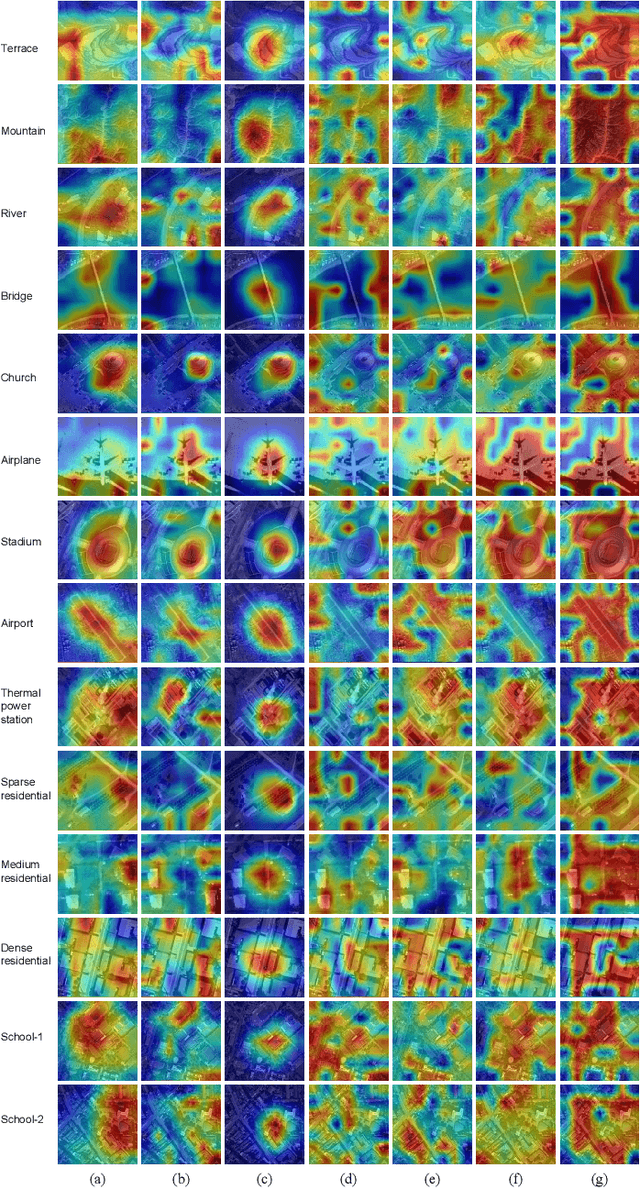
Abstract:Deep learning has largely reshaped remote sensing research for aerial image understanding. Nevertheless, most of existing deep models are initialized with ImageNet pretrained weights, where the natural images inevitably presents a large domain gap relative to the aerial images, probably limiting the finetuning performance on downstream aerial scene tasks. This issue motivates us to conduct an empirical study of remote sensing pretraining (RSP). To this end, we train different networks from scratch with the help of the largest remote sensing scene recognition dataset up to now-MillionAID, to obtain the remote sensing pretrained backbones, including both convolutional neural networks (CNN) and vision transformers such as Swin and ViTAE, which have shown promising performance on computer vision tasks. Then, we investigate the impact of ImageNet pretraining (IMP) and RSP on a series of downstream tasks including scene recognition, semantic segmentation, object detection, and change detection using the CNN and vision transformers backbones. We have some empirical findings as follows. First, vision transformers generally outperforms CNN backbones, where ViTAE achieves the best performance, owing to its strong representation capacity by introducing intrinsic inductive bias from convolutions to transformers. Second, both IMP and RSP help deliver better performance, where IMP enjoys a versatility by learning more universal representations from diverse images belonging to much more categories while RSP is distinctive in perceiving remote sensing related semantics. Third, RSP mitigates the data discrepancy of IMP for remote sensing but may still suffer from the task discrepancy, where downstream tasks require different representations from the scene recognition task. These findings call for further research efforts on both large-scale pretraining datasets and effective pretraining methods.
Revisiting Document Image Dewarping by Grid Regularization
Mar 31, 2022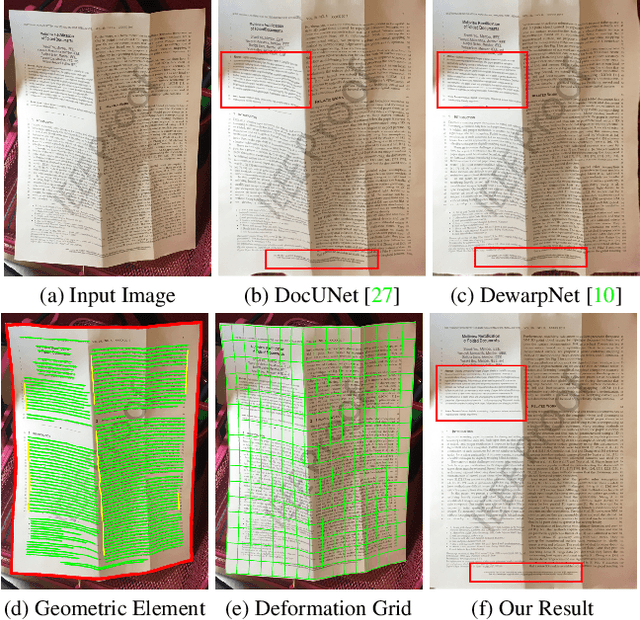
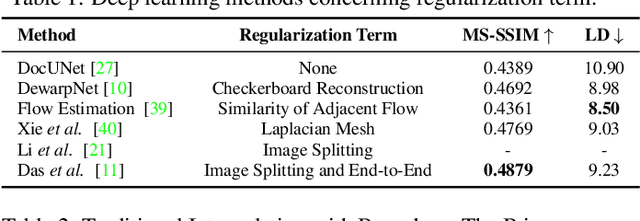
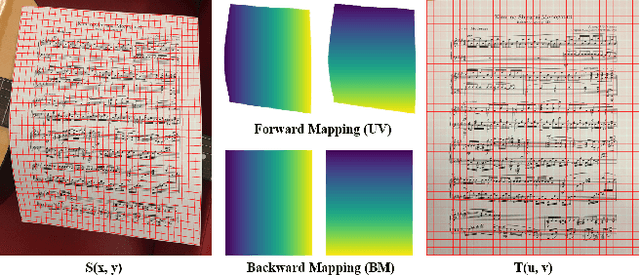
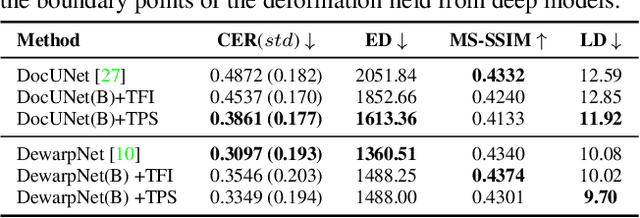
Abstract:This paper addresses the problem of document image dewarping, which aims at eliminating the geometric distortion in document images for document digitization. Instead of designing a better neural network to approximate the optical flow fields between the inputs and outputs, we pursue the best readability by taking the text lines and the document boundaries into account from a constrained optimization perspective. Specifically, our proposed method first learns the boundary points and the pixels in the text lines and then follows the most simple observation that the boundaries and text lines in both horizontal and vertical directions should be kept after dewarping to introduce a novel grid regularization scheme. To obtain the final forward mapping for dewarping, we solve an optimization problem with our proposed grid regularization. The experiments comprehensively demonstrate that our proposed approach outperforms the prior arts by large margins in terms of readability (with the metrics of Character Errors Rate and the Edit Distance) while maintaining the best image quality on the publicly-available DocUNet benchmark.
Expanding Low-Density Latent Regions for Open-Set Object Detection
Mar 28, 2022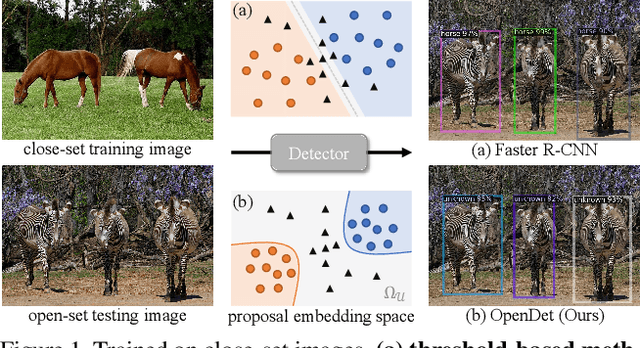

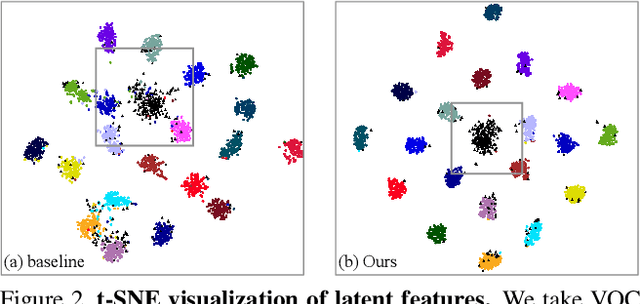

Abstract:Modern object detectors have achieved impressive progress under the close-set setup. However, open-set object detection (OSOD) remains challenging since objects of unknown categories are often misclassified to existing known classes. In this work, we propose to identify unknown objects by separating high/low-density regions in the latent space, based on the consensus that unknown objects are usually distributed in low-density latent regions. As traditional threshold-based methods only maintain limited low-density regions, which cannot cover all unknown objects, we present a novel Open-set Detector (OpenDet) with expanded low-density regions. To this aim, we equip OpenDet with two learners, Contrastive Feature Learner (CFL) and Unknown Probability Learner (UPL). CFL performs instance-level contrastive learning to encourage compact features of known classes, leaving more low-density regions for unknown classes; UPL optimizes unknown probability based on the uncertainty of predictions, which further divides more low-density regions around the cluster of known classes. Thus, unknown objects in low-density regions can be easily identified with the learned unknown probability. Extensive experiments demonstrate that our method can significantly improve the OSOD performance, e.g., OpenDet reduces the Absolute Open-Set Errors by 25%-35% on six OSOD benchmarks. Code is available at: https://github.com/csuhan/opendet2.
Partial Wasserstein Adversarial Network for Non-rigid Point Set Registration
Mar 04, 2022
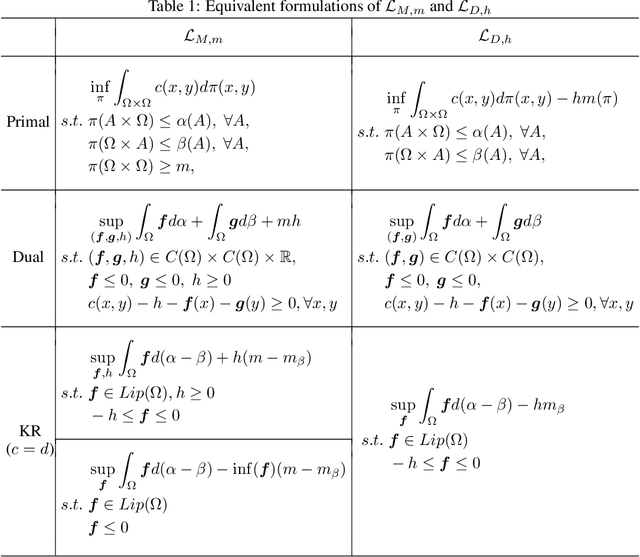
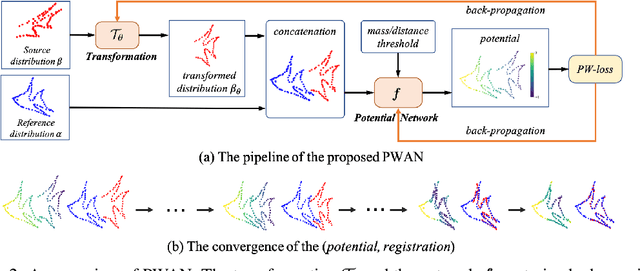

Abstract:Given two point sets, the problem of registration is to recover a transformation that matches one set to the other. This task is challenging due to the presence of the large number of outliers, the unknown non-rigid deformations and the large sizes of point sets. To obtain strong robustness against outliers, we formulate the registration problem as a partial distribution matching (PDM) problem, where the goal is to partially match the distributions represented by point sets in a metric space. To handle large point sets, we propose a scalable PDM algorithm by utilizing the efficient partial Wasserstein-1 (PW) discrepancy. Specifically, we derive the Kantorovich-Rubinstein duality for the PW discrepancy, and show its gradient can be explicitly computed. Based on these results, we propose a partial Wasserstein adversarial network (PWAN), which is able to approximate the PW discrepancy by a neural network, and minimize it by gradient descent. In addition, it also incorporates an efficient coherence regularizer for non-rigid transformations to avoid unrealistic deformations. We evaluate PWAN on practical point set registration tasks, and show that the proposed PWAN is robust, scalable and performs more favorably than the state-of-the-art methods.
Aerial Scene Parsing: From Tile-level Scene Classification to Pixel-wise Semantic Labeling
Jan 09, 2022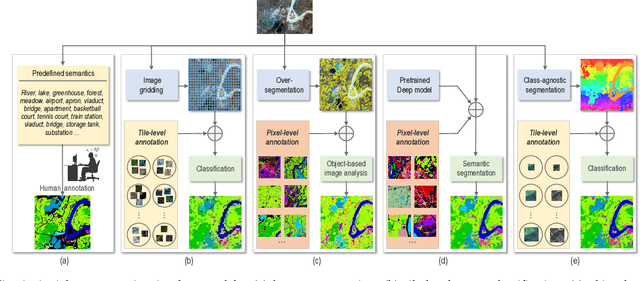
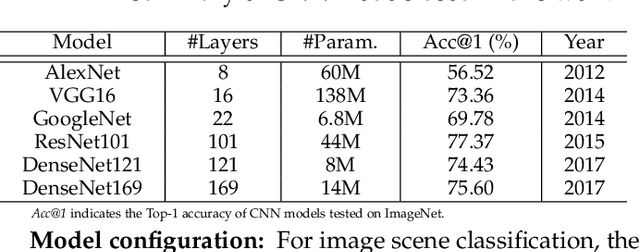
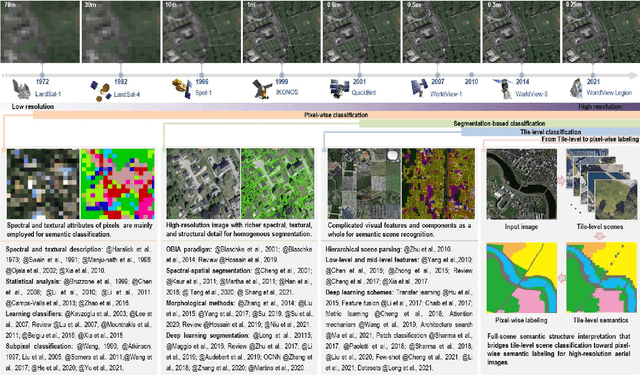
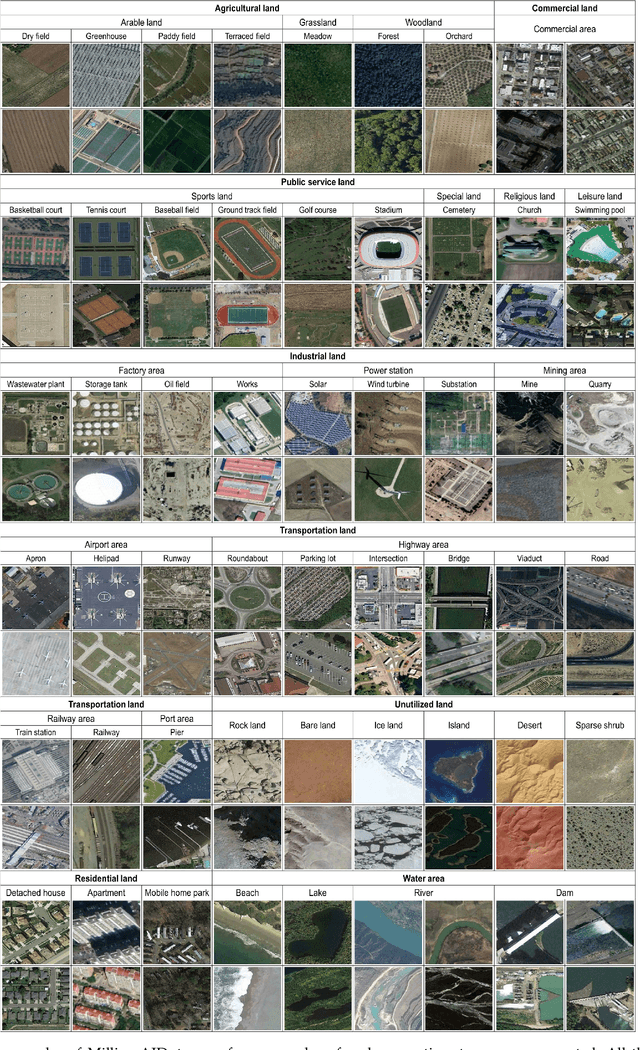
Abstract:Given an aerial image, aerial scene parsing (ASP) targets to interpret the semantic structure of the image content, e.g., by assigning a semantic label to every pixel of the image. With the popularization of data-driven methods, the past decades have witnessed promising progress on ASP by approaching the problem with the schemes of tile-level scene classification or segmentation-based image analysis, when using high-resolution aerial images. However, the former scheme often produces results with tile-wise boundaries, while the latter one needs to handle the complex modeling process from pixels to semantics, which often requires large-scale and well-annotated image samples with pixel-wise semantic labels. In this paper, we address these issues in ASP, with perspectives from tile-level scene classification to pixel-wise semantic labeling. Specifically, we first revisit aerial image interpretation by a literature review. We then present a large-scale scene classification dataset that contains one million aerial images termed Million-AID. With the presented dataset, we also report benchmarking experiments using classical convolutional neural networks (CNNs). Finally, we perform ASP by unifying the tile-level scene classification and object-based image analysis to achieve pixel-wise semantic labeling. Intensive experiments show that Million-AID is a challenging yet useful dataset, which can serve as a benchmark for evaluating newly developed algorithms. When transferring knowledge from Million-AID, fine-tuning CNN models pretrained on Million-AID perform consistently better than those pretrained ImageNet for aerial scene classification. Moreover, our designed hierarchical multi-task learning method achieves the state-of-the-art pixel-wise classification on the challenging GID, bridging the tile-level scene classification toward pixel-wise semantic labeling for aerial image interpretation.
 Add to Chrome
Add to Chrome Add to Firefox
Add to Firefox Add to Edge
Add to Edge